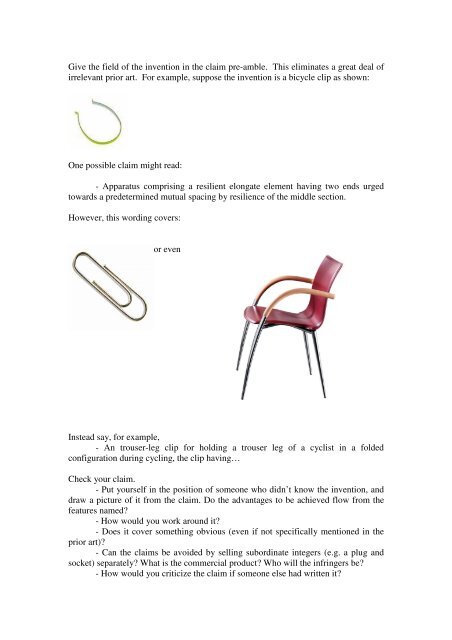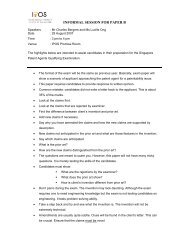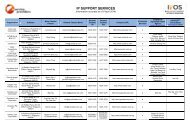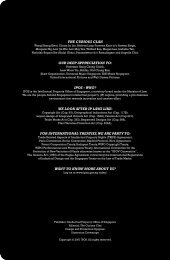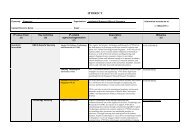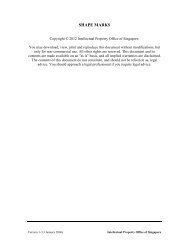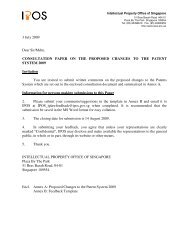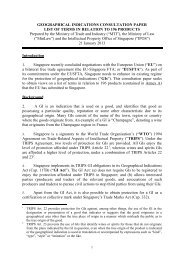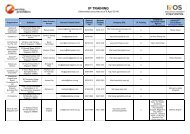Notes on Paper A â Tim Watkin The following notes are a summary ...
Notes on Paper A â Tim Watkin The following notes are a summary ...
Notes on Paper A â Tim Watkin The following notes are a summary ...
You also want an ePaper? Increase the reach of your titles
YUMPU automatically turns print PDFs into web optimized ePapers that Google loves.
Give the field of the inventi<strong>on</strong> in the claim pre-amble. This eliminates a great deal of<br />
irrelevant prior art. For example, suppose the inventi<strong>on</strong> is a bicycle clip as shown:<br />
One possible claim might read:<br />
- Apparatus comprising a resilient el<strong>on</strong>gate element having two ends urged<br />
towards a predetermined mutual spacing by resilience of the middle secti<strong>on</strong>.<br />
However, this wording covers:<br />
or even<br />
Instead say, for example,<br />
- An trouser-leg clip for holding a trouser leg of a cyclist in a folded<br />
c<strong>on</strong>figurati<strong>on</strong> during cycling, the clip having…<br />
Check your claim.<br />
- Put yourself in the positi<strong>on</strong> of some<strong>on</strong>e who didn’t know the inventi<strong>on</strong>, and<br />
draw a picture of it from the claim. Do the advantages to be achieved flow from the<br />
features named?<br />
- How would you work around it?<br />
- Does it cover something obvious (even if not specifically menti<strong>on</strong>ed in the<br />
prior art)?<br />
- Can the claims be avoided by selling subordinate integers (e.g. a plug and<br />
socket) separately? What is the commercial product? Who will the infringers be?<br />
- How would you criticize the claim if some<strong>on</strong>e else had written it?


